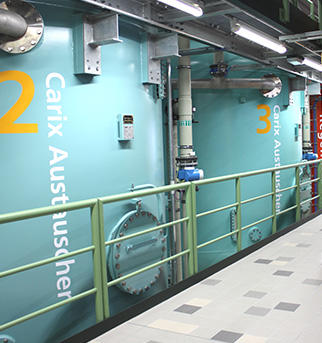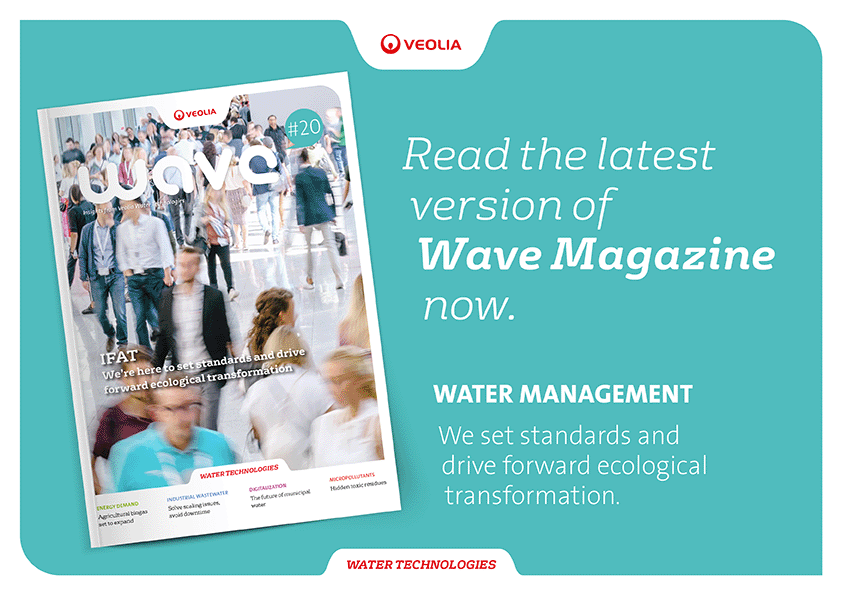In the face of climate change, Germany has set itself ambitious climate targets in line with the Paris Agreement — the legally binding international treaty that was signed in 2016 during the United Nations’ annual climate change conference. Its purpose is to limit global warming to well below two degrees Celsius, compared to pre-industrial levels.
Germany’s Climate Action Plan 2050 is the result of this agreement and it concretely details the criteria governments, industries and businesses must adhere to and what they must base their strategic decisions and growth on.
According to NASA, as of 2020, human activities have raised atmospheric concentrations of carbon dioxide (CO2) by 47 percent above the pre-industrial levels found in 1850. This means, in 170 years, human activities have raised atmospheric CO2 levels by more than what has happened naturally over the previous 20,000 years.
As part of this 2050 plan, the country has also set itself the target of reducing its greenhouse gas emissions (GHG) by 55 percent, compared to 1990, and this reduction has been mapped out revealing targets for individual sectors.
Even though there are no set targets for local governments, federal states are implementing their own climate protection and/or energy laws, following the Climate Action Plan 2050’s requirements. They are then passing along funding to regional bodies to advance environmental protection at all levels, including projects to secure sustainable drinking water resources.
One such project that has benefited from government backed funding is Waldwasser in Moos in East Bavaria. The drinking water site near Deggendorf, Germany, began operation in 2018 and simultaneously became one of the most modern plants in Europe.
After only three and a half years of planning and construction, the waterworks in Moos, owned by waldwasser - Wasserversorgung Bayerischer Wald, a municipality union, started providing more than 80,000 private households with soft, clean drinking water, and it does so with a crystal clear conscience.

Thanks to an ion exchange process, the energy consumption of this drinking water site is reduced by 50 percent, when compared to the alternative reverse osmosis processes.
The technology at the heart of this efficiency is Carix™. It is the only ion exchange process for softening drinking water that does not require harmful regeneration chemicals and, in addition to calcium and magnesium, it also reduces hydrogen carbonate, sulfate, nitrate and chloride. It produces soft water for the residents, protects the drinking water network — owing to less corrosion — and saves households costs of approximately €150 per year owing to energy savings and fewer cleaning agents.
Carix is both energy efficient and beneficial to local residents but it has an even bigger environmental plus point which is what warranted government-backed funding from the Climate Action Plan.
The technology regenerates itself by recovering its carbon dioxide (CO2) exhaust gasses and is able to reuse them as a regeneration agent instead of emitting them directly into the air. This relieves the atmosphere of 630 tons of CO2 per year — equivalent to the CO2 emissions of 6.6 million kilometers traveled in a car every year — and directly benefits the local environment and air quality.

Uwe Sauer, Business Development & Sales Manager Municipal Applications, Veolia Water Technologies:
The basic principle of the Carix process has not changed since it was invented by Veolia. It’s an ion exchanger that can be regenerated with carbon dioxide to soften drinking water. However, the latest generation of the system is no longer proportional to older systems in terms of yield and energy consumption. With this latest technology, the Moos waterworks sets standards in terms of ecology, economy and drinking water quality. In a nutshell, with a softening from 20 to 25 degrees of hardness (°dH) reduced down to 8 to 10 °dH; the amount of wastewater produced is four to eight percent less; and energy consumption has been halved to between 0.25 and 0.15 kilowatt-hour per cubic meter, the technology results in savings and optimizations across the board. In addition to the higher loading capacity of the ion exchange resins, the main reason for these savings is the modification of the CO2 recovery during regeneration. The vacuum range of the degassing — for the CO2 recovery — can now be set variably between 200 and 1,000 millibars. The gas extraction units are also equipped with highly energy-efficient synchronous reluctance motors and frequency converters, and a new control concept ensures energy-saving and needs-based gas production.
Due to the large energy savings, especially when compared to traditional reverse osmosis technologies often found on drinking water plants, the German Ministry of Environment has sponsored the technology used at the waterworks in Moos countrywide.
There are currently 21 Carix systems in operation across Europe, where environmental and sustainable benefits are highly sought. Compared to membrane processes such as reverse osmosis, as a basis, ion exchange produces around 60 percent less wastewater and uses 50 percent less energy.



